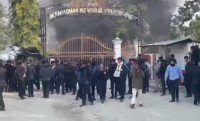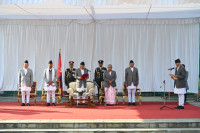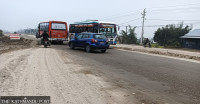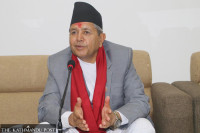National
Rhino translocation resumes after 13 yrs
Almost 13 years after the last rhino translocation in the country, a male rhino from the Chitwan National Park (CNP) has been released into its new wild habitat in Bardiya National Park (BNP).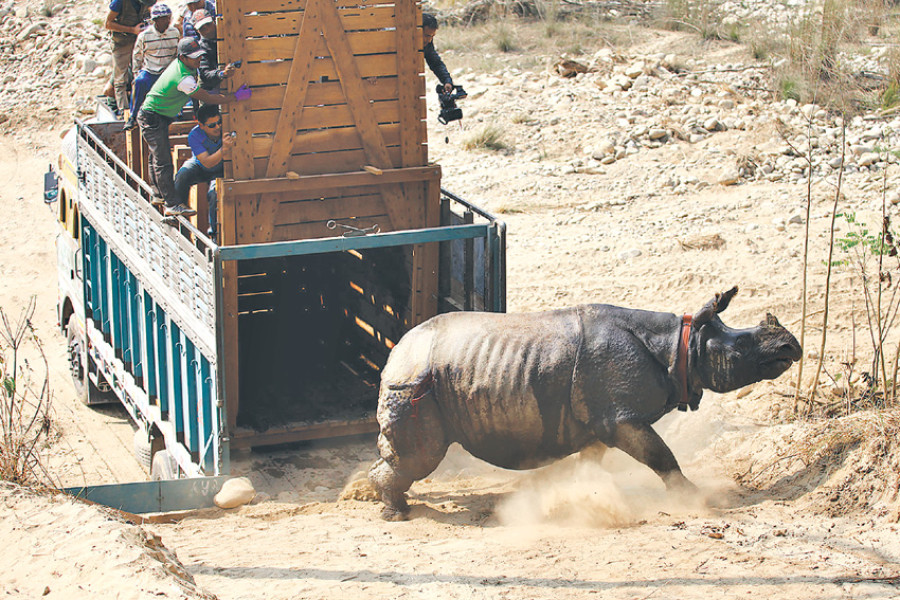
Almost 13 years after the last rhino translocation in the country, a male rhino from the Chitwan National Park (CNP) has been released into its new wild habitat in Bardiya National Park (BNP).
The darted 12-year-old male rhino were put in a wooden enclosure and carried almost 300 km away on a truck to its new habitat in Babai Valley in Bardiya on Wednesday morning.
The move marked the reintroduction of rhino translocation from one wild habitat to another to provide a viable and sustainable environment for these endangered species facing threats from poachers. The Ministry of Forests and Soil Conservation (MoFSC) has planned to carry out translocation of 30 rhinos from Chitwan to two potential habitats—BNP and Sukhlaphanta Wildlife Reserve in the next 2-3 years. Chitwan, according to 2015 census, boasts 605 of the 645 one-horned rhinos in the country.
“This is a great effort undertaken by the conservationists to improve the viable rhino population in the wild habitats,” said Forest Minister Agni Sapkota.
“We are committed to ensure the safety of the rhinos in their new habitats through the engagement of the local authorities, security personnel and local communities.”
As part of the first phase of translocation, two more rhinos—a male and a female—from Chitwan are expected to be shifted to Bardiya on Thursday.
“After completing the first phase of translocation, we will study whether the habitat in Bardiya is appropriate for further translocation,” said Ram Chandra Kandel, chief conservation officer at the CNP.
While the authorities and conservationists from the WWF Nepal have maintained that rhino translocation is a much-needed conservation tool to boost the existing population, the local stakeholders along with conservationists have protested the move.
“The translocation is being done without any scientific study and without proper consultations with the local stakeholders and conservation partners,” said Ananta Prakash Subedi, lecturer at the Agriculture and Forestry University in Rampur, Chitwan.
According to Subedi, the past record of rhino translocation was not impressive as nearly all of the 83 rhinos transferred from Chitwan to Bardiya were killed by the poachers. “The authorities are using the same place as an alternative habitat for the translocation this time without ensuring that they are now safe,” he said.
However, park authorities are committed to enhance their conservation strategies, including establishing adequate number of security posts, improving monitoring and surveillance to ensure rhino translocation is a success.
“We are hopeful not to repeat the past mistakes by improving the security and monitoring of the movement and habitats of the rhinos in Bardiya,” said Kandel.
(With inputs from correspondents from Bardiya and Chitwan)




 7.12°C Kathmandu
7.12°C Kathmandu
